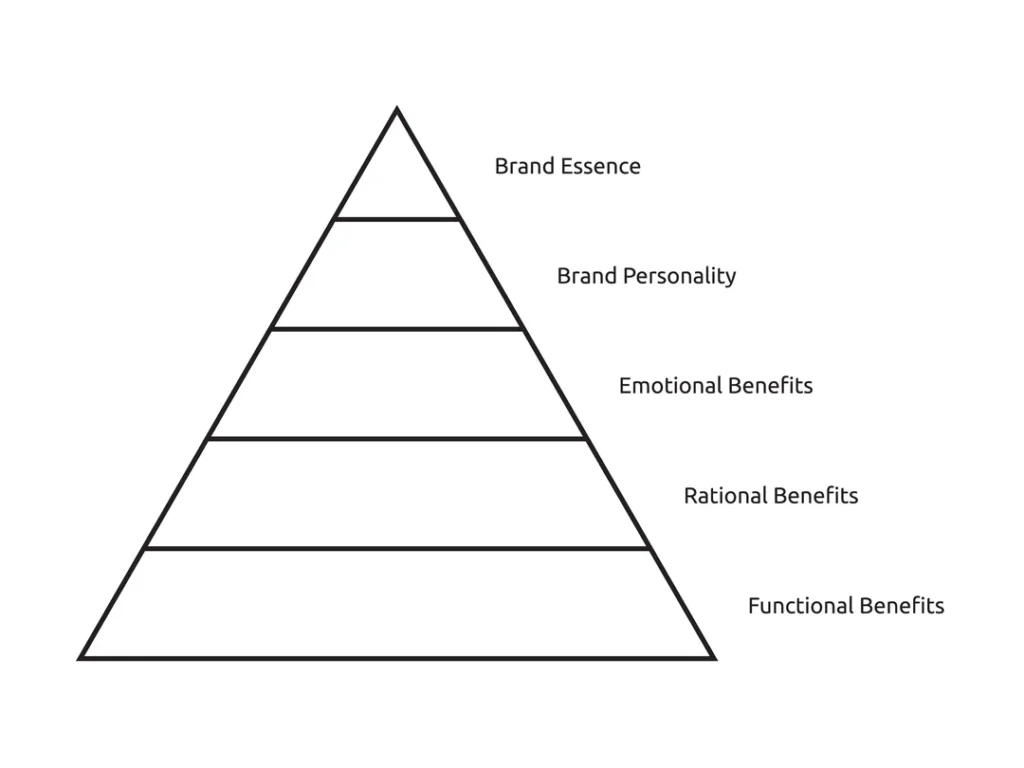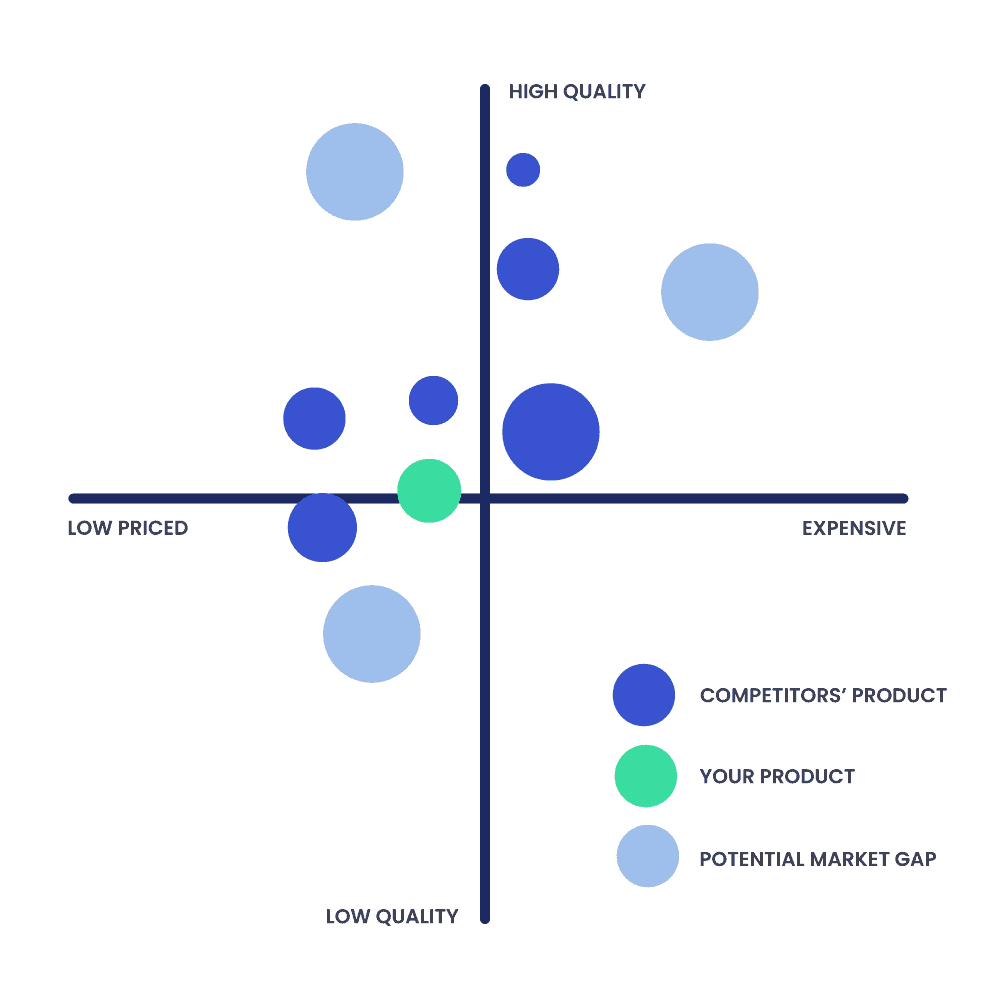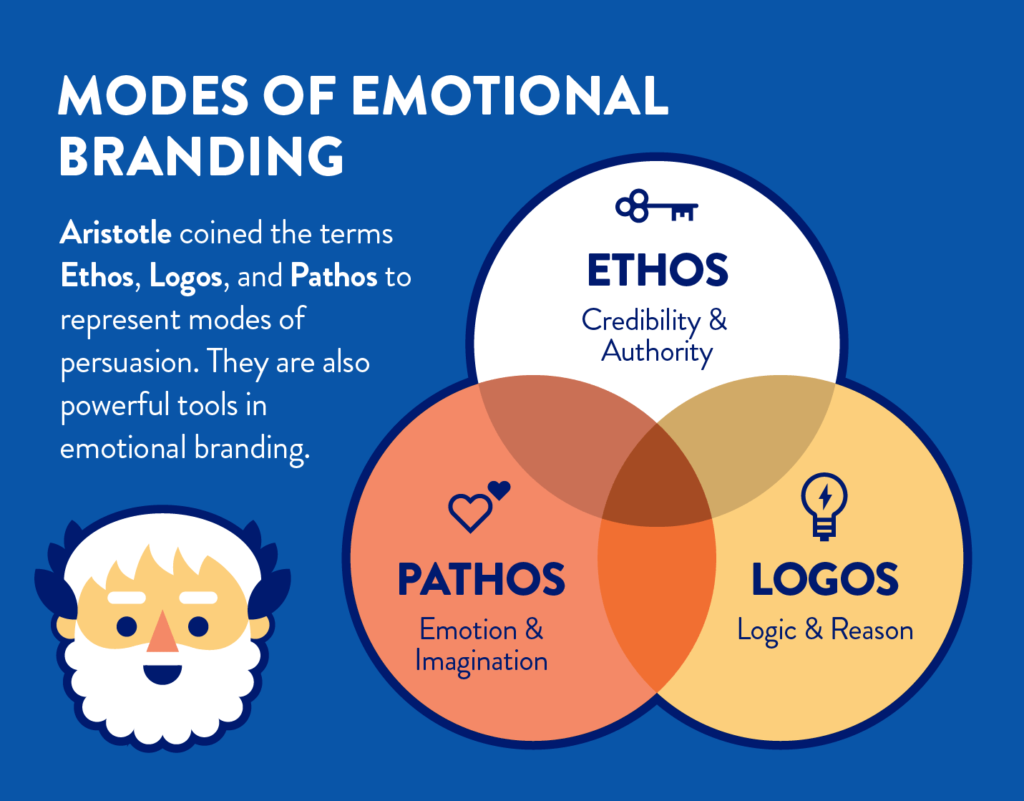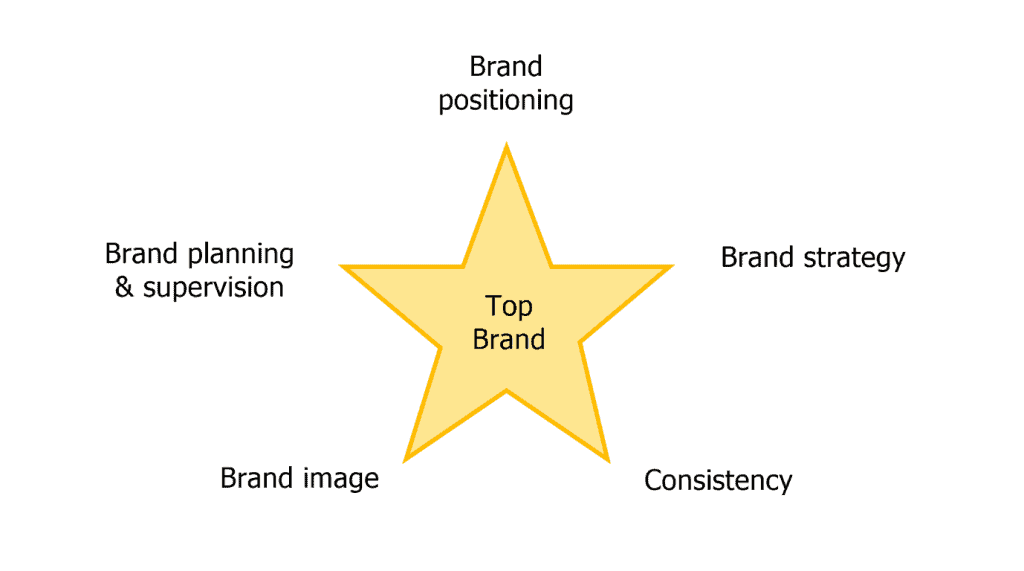The Branding Pyramid: A Strategic Framework
Building a strong brand that resonates with target consumers takes careful planning and execution across multiple fronts. Enter the branding pyramid – a conceptual framework identifying the critical elements required to create a memorable, meaningful brand in the marketplace. Understanding and applying this strategic approach can help companies develop brands that inspire customer trust, preference, and loyalty.
Table of Contents
Defining the Branding Pyramid
The branding pyramid visualises the core components to build brand equity and drive growth. Like Maslow’s hierarchy of needs or a food group pyramid, the foundational levels must be firmly established to reach the aspirational pinnacle.
At the pyramid's base are functional qualifiers – the tangible, objective aspects of a product or service offering like ingredients, features, and pricing. Building on that foundation are emotional rewards and ties – subjective benefits like enjoyment, status, and self-expression. The pinnacle is occupied by brand essence, vision, and purpose.
Aligning all levels of this framework creates a branding strategy that taps into both minds and hearts. Doing so elevates key brand elements from commodities to meaningful market differentiators.

Why the Branding Pyramid Matters
The branding pyramid framework provides a structure for creating brands that resonate at multiple levels, not just functionally. This builds traction and immersion.
It emphasises the need to appeal to the heart and mind to drive preference. Features alone are not enough for differentiation. By evoking feelings and shared ideals, brands embed themselves into consumer lifestyles and habits.
The branding pyramid allows marketers to strategise which connections are most relevant for their target audience and product category when shaping brand identity and positioning.
Foundation Level: Functional Qualifiers

Functional qualifiers encompass the baseline attributes and economic value proposition of an offering. These tangible specifics are essential for branding success but rarely inspire deep emotional connections or loyalty.
Product Attributes
Product attributes refer to measurable, technical, or physical specifications of a good or service, like
- Ingredients
- Materials
- Size/dimensions
- Weight
- Capacity
- Speed
- Strength
- Durability.
For example, a laptop’s attributes include processor speed, memory capacity, screen resolution, and battery life.
Getting product attributes right ensures the brand delivers on functional promises. But focusing too heavily here limits upside potential. Few consumers select one laundry detergent over another based primarily on chemical composition. Brand builders must look higher up the pyramid.
Features & Benefits
Features describe “what” an offering provides, while benefits articulate “why” those attributes matter.
Effective branding requires translating technical jargon into meaningful advantages for a target audience. For instance, specifying a shoe contains responsive cushioning (feature) is less compelling than explaining how that cushioning reduces injury risk during runs (benefit).
Pricing
Pricing represents what consumers must give up or exchange to acquire a product or service. Brands must set prices in line with production costs and target segments.
For example, positioning as an elite luxury brand demands high price points, while penetration pricing aims to attract the mass market. Getting pricing wrong risks brand rejection.
Still, cost represents just one piece of the branding puzzle. There’s far more to iconic brands like Starbucks, Apple, and Nike than affordable products. The upper layers of meaning hold the key.
While necessary, focusing solely on functional qualifiers commoditises brands into undifferentiated offerings. Strong branding requires tapping into the deeper motivations and desires of target consumers.
Second Level: Emotional Rewards & Ties

Emotional rewards and ties encompass the subjective, experiential benefits aligned with psychological and social needs. Connecting with consumers here inspires brand preference and loyalty, surpassing rational calculations.
Experiential Rewards
Brand experiences span sensations, aesthetics, ease of use, customisation, interactivity, convenience, and more. Apple built a global empire by making electronics beautifully designed and intuitively operated.
Psychological Rewards:
The strongest brands become badges of identity by tapping into desires for
- Achievement,
- Mastery,
- Control,
- Security,
- Belonging.
Harley-Davidson built a brand focused on independence, freedom, and rebellion. Their motorcycles deliver an aspirational self-image.
Social & Cultural Rewards
People adopt brands as “tokens” to fit cultural norms, build status, or reinforce group bonds, like sporting team jerseys or luxury logos.
Brand builders must identify social motivations and signs of belonging for targeted segments and cultures. Local nuances matter hugely.
Story & Myth-Making
Great branding infuses offerings with archetypal narratives and myth-making tied to universal yearnings and anxieties. These symbolic associations spur deep emotional resonance and loyalty like Nike’s “Just Do It” or Apple’s “Think Different” campaigns.
The Pinnacle: Brand Essence, Vision, & Purpose

Occupying the pinnacle of the branding pyramid are brand essence (core identity beyond products), vision (aspirational future state) and purpose (societal contributions). Reaching this peak requires transcending functional and emotional qualifiers to connect with collective values and higher callings.
Core Brand Identity
Leading brands project a fundamental identity detached from underlying offerings. This ethos sits above any product mix evolutions. For example, crossing into furniture and apparel barely altered IKEA’s brand essence, anchored on Scandinavian simplicity and affordability.
Aspirational Vision
Iconic brands articulate aspirational visions of better futures for communities or humanity. Tesla’s mission to “accelerate the world’s transition to sustainable energy” offers society-level inspiration beyond selling cars.
Noble Purpose
The most revered brands advance honourable causes or principles for “doing good” worldwide. Patagonia’s environmental activism and TOMS Shoes’ “one-for-one giving model” signify benevolent purposes prized by target segments.
Synthesising core identity, soaring vision, and virtuous purpose into concise brand essence statements provides definitive guidance for long-term growth. For example,
- IKEA: “To create a better everyday life for as many people as possible through beautiful, affordable, well-designed products.”
- Disney: “We create happiness and magical memories by telling heartwarming stories about the power of goodness and optimism.”
This pinnacle focus transcends products for elevated market positioning and fierce customer loyalty based on shared ideals and identity fused to brands’ visions and purposes.
Implications Across Brand-Building Activities
Framing branding strategies via the hierarchy of this pyramid ensures clarity, consistency, and impact across all brand-building activities over the long run.
Brand Messaging & Positioning
Core brand messages and market positioning statements must synchronise with higher levels of the branding pyramid to achieve full potency. For example, leading with functional qualifiers (ingredients, pricing) dwells in the commodity basement.
Elevating messaging to emotional and societal associations (enjoyment, expression, sustainability) ascends into resonate branding territory through differentiation and appeal to shared values.
Brand Name Selection
When naming brands or products, descriptive functionality tends to have a dull impact. At the same time, symbolic abstraction holds greater intrigue and fluid meaning to fuel distinctive branding unencumbered by physical offerings.
For example, the durability of a “Flex-Seal” branded adhesive works functionally but lacks magnetic branding power. By contrast, conjuring mythical inspiration – as Nestle did by naming its chocolate bar “Avalon” after the Arthurian island – requires no explanation to spark positive associations.
Brand Identity Systems
Logos, colour palettes, fonts, and other brand identity elements must cohere to pyramid principles to enhance resonance. Downplaying visual identity risks commoditisation while infusing it with emotional and societal symbolism attracts ardent brand fans.
For instance, the Apple logo’s playful bite and emerald green leaves connote hopeful taking of knowledge – symbolic associations infinitely more valuable than any technical specifications.
Brand Partnerships
Co-branding and brand licensing decisions should weigh target segment compatibility up and down branding pyramid structures to gauge brand dilution or enhancement risks. Collaborations emphasise functional rewards (cost savings) and struggle to inspire, while those tapping shared visions and purposes ignite passionate responses.
For example, Lexus car and Louis Vuitton luggage co-brand on luxury aesthetics and prestige conferral, while value brands showcasing budget savings partnerships often suffer consumer apathy or distrust regarding quality compromises.
Hallmarks of Masterfully Branded Companies

Certain brands do an exceptional job authentically activating multiple tiers of the branding pyramid that resonate with target audiences. Here are some stellar examples:
Nike
- Functional: Offers performance apparel for athletes along with shoe customisation.
- Emotional: Inspires you to pursue your most significant potential with the “Just Do It” mantra.
- Mental: Relied on by committed sports enthusiasts
- Spiritual: Represents perseverance and living actively
- Ethical: Advocates social causes like inclusion, health awareness
Disney
- Functional: Delivers magical entertainment experiences
- Emotional: Captivates the imagination and nostalgia for childhood
- Mental: Viewed as the pinnacle of animated storytelling
- Spiritual: Epitomises optimism, dreams coming true
- Ethical: Promotes strong values, brings joy to millions
Patagonia
- Functional: Provides outdoor adventure gear
- Emotional: Embodies love for nature, travel intrigue
- Mental: Regarded as an eco-friendly industry pioneer
- Spiritual: Champions environmental conservation
- Ethical: Donates 1% of sales for green initiatives
These examples showcase how brands that cultivate multi-dimensional appeal and affinity can achieve legendary status and customer devotion based on shared ideals.
Measuring Brand Equity
Given the resources invested in brand building, companies must measure their brand equity to assess performance. Useful metrics include:
- Brand awareness reflects visibility and familiarity based on surveys and media metrics.
- Brand associations capture the images, qualities and emotions evoked by a brand.
- Perceived quality covers how consumers judge overall product excellence.
- Brand loyalty tracks repeat purchase rates and referrals as signs of allegiance.
- Financial outcomes like price premiums, market share gains and revenue growth also matter.
Brands leveraging the branding pyramid model should see upticks across these brand equity dimensions over time. You cannot manage what you do not measure.
Optimising Brand Positioning Strategies

When determining how to position a brand within the branding pyramid framework strategically, there are a few best practices to follow:
- Conduct research to identify target audience needs, category trends, and perceptions of existing brands. Surveys, interviews, and focus groups can unlock insights.
- Perform a gap analysis to pinpoint voids where potential white space exists for new brand positioning. Look across all five branding pyramid layers.
- Determine where to play and how to win. Decide which pillars of the branding pyramid warrant the most investment and activation focus to differentiate your brand where it counts most.
- Codify the brand identity and essence through concise messaging and visuals that become brand assets. This brings cohesion across communications.
- Align the organisation behind delivering brand promises rooted in branding pyramid strategic imperatives.
- Invest adequately in brand-building, not just short-term sales activation. A little upfront goes a long way.
- Give it time to take hold. Resist overhauling strategies prematurely before they have fruition—brand momentum compounds.
Following these best practices will lead to more precise, more impactful brand positioning strategies that leverage the full power of the branding pyramid framework.
Conclusion: Build Brand Equity by Climbing The Pyramid
Within crowded and competitive markets, compelling branding centred on emotional, social and aspirational rewards attracts interest while forging lasting client relationships and allegiance.
Exploring consumer psychology and cultural symbolism guides brands to the peak branding differential covered here as core identity, overarching vision, and purposeful principles that closely align with public values.
Applying the Branding Pyramid model delivers optimal frameworks and touchpoints to separate from commodity positioning, transcend transactions to gain trust, and construct cohesive resonance across each consumer interaction to increase acquisition, retention, referrals and brand devotion amplified over decades.
Frequently Asked Questions
How is the branding pyramid different from other brand strategy frameworks?
Many branding models focus narrowly on logos, taglines and visual identity. By contrast, the branding pyramid provides a more comprehensive blueprint spanning functional attributes, experiential rewards, and purpose/vision to guide strategic marketing and innovation decisions.
What types of companies benefit most from the branding pyramid?
This approach proves most useful for small companies looking to increase into iconic brands from inception, as well as more prominent brands losing relevance and hoping to reconnect to contemporary consumer values and differentiate commoditised categories.
What does the bottom tier of “Functional Qualifiers” on the branding pyramid encompass?
The foundational tier focuses on tangible product performance metrics (technical specifications, ingredients, warranty), pricing structure (discount, premium, Economy) and communications of objective usefulness regarding “what” an offering provides relative to competitors.
How can companies optimise the “Emotional Rewards & Ties” branding tier?
Focus shifts from specifications to resonating with psychological needs (confidence, freedom, status), social/cultural symbolism (personalities, stereotypes) and brand storytelling via advertising campaigns, influencer marketing and viral content.
What business practices strengthen the top branding tier centred on “Core Identity, Vision and Purpose”?
These symbolic associations come through corporate mission statements on “who we are and why we exist” that frame societal remedies (disease, inequality, sustainability) more than product mixes or financials. Unique value-based positioning allows premium pricing based on principles.
